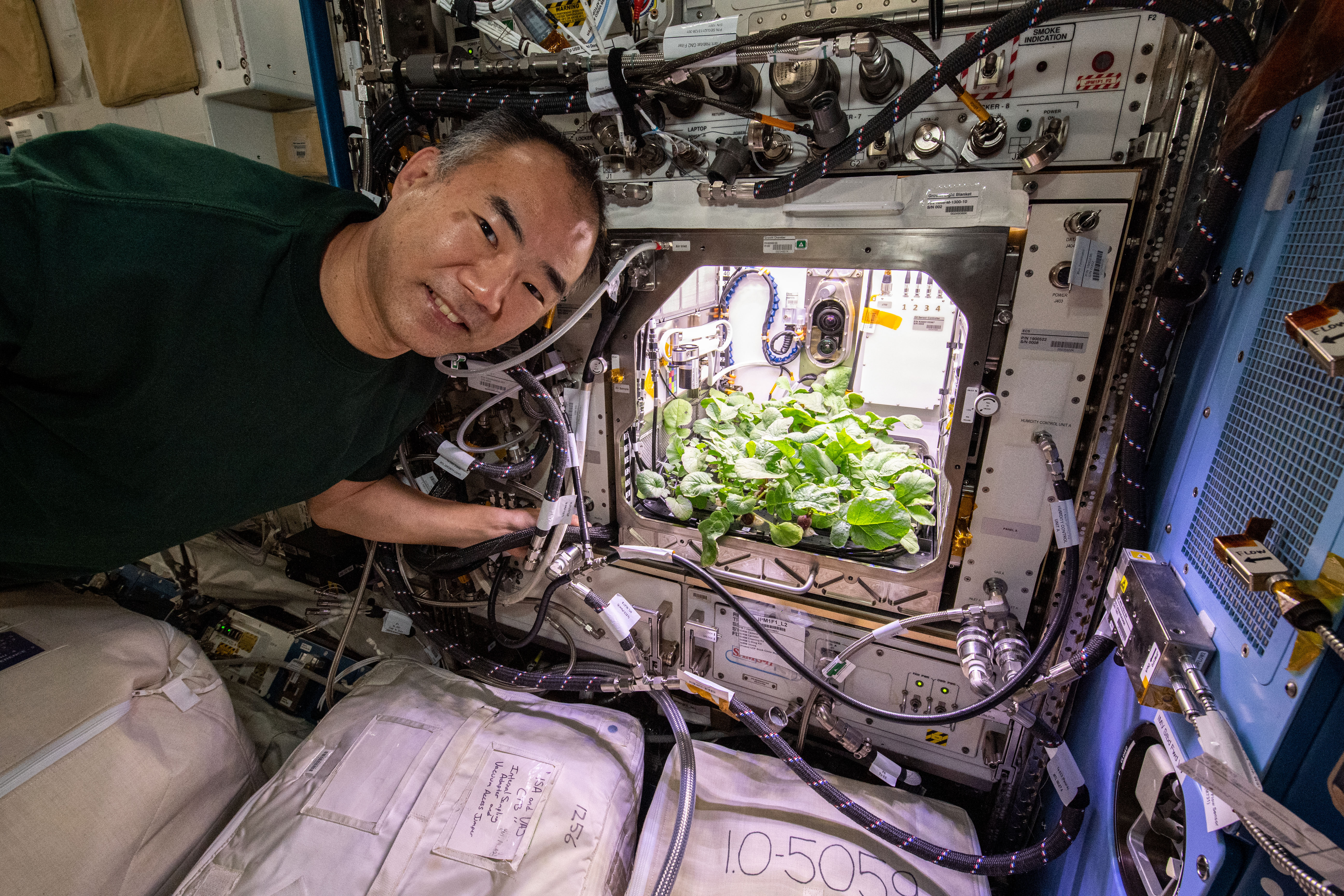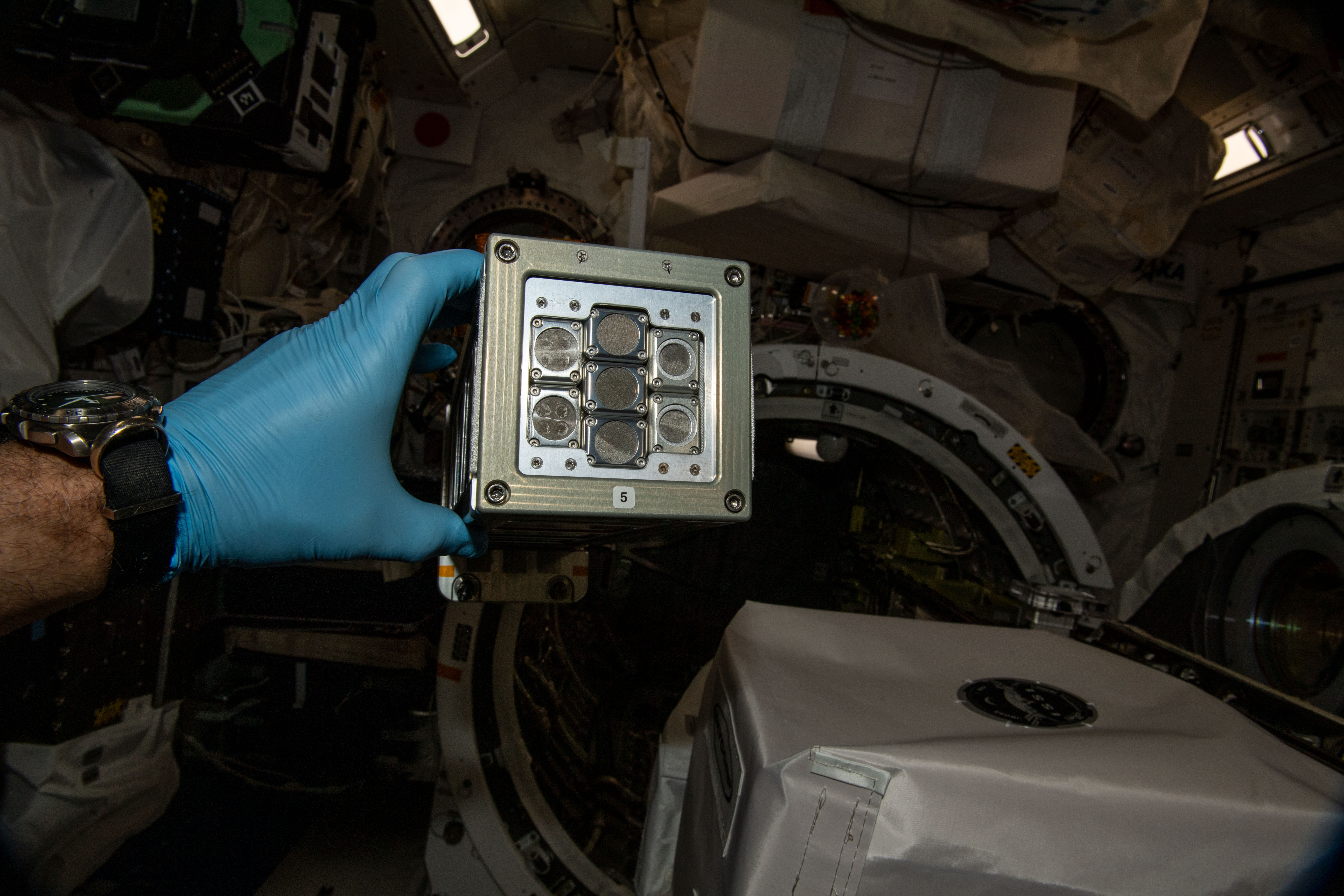New survey outlines what NASA must do over the next 10 years to help astronauts thrive beyond Earth
The decadal survey has highlighted such investigations as the effects of space on biology as being key to NASA's next 10 years and to the Artemis mission.

A new era of space exploration is dawning with an intense focus on humanity's return to the moon.
If the United States and NASA are to continue to lead the world in space exploration during an era in which prolonged space stays for astronauts, a sustained human presence on the moon and even sending the first humans to Mars are on the horizon, then the nation needs to increase its investment in the space agency's Division of Biological and Physical Sciences (BPS). At least, that is the conclusion reached by a committee behind a new decadal survey from the National Academies of Sciences, Engineering and Medicine.
The report, entitled "Thriving in Space ― Ensuring the Future of Biological and Physical Sciences Research: A Decadal Survey for 2023–2032," addresses some of the challenges that NASA's Artemis program will face over the coming 10 years as it aims to send the first person of color and woman to the lunar surface by 2025 and establish a sustainable human presence on the moon.
Related: NASA establishes 'Moon to Mars' office to help get astronauts to Red Planet
"Sustained human exploration beyond low Earth orbit presents science objectives and challenges we haven't yet completed or in some cases even approached through the era of the International Space Station ― crews will spend more time beyond low Earth orbit, in transit and while living and working in lunar or Martian stations," decadal steering committee co-chair and professor at the University of Florida Robert Ferl said in a statement. "NASA should work to take advantage of the profusion of research capabilities from academia and through commercial space platforms to tackle these new challenges and ensure BPS can continue meeting the science needs of the nation."
11 key areas needed to ensure space success over the next decade
The paper identifies 11 key scientific questions that must be answered over the coming decade in order for NASA to safely explore space and to conduct vital research only possible in low-gravity environments. These are spread over three broad research areas covered by NASA's BPS division and the space agency's Human Research Program (HRP) and emphasize the overlap between physical and biological phenomena.
The biological aspects focused on in the survey include:
Breaking space news, the latest updates on rocket launches, skywatching events and more!
Biological Sciences in Space and Planetary Environments: Scientists with NASA's biological programs must identify the health risks presented to humans and other biological systems by space environments, according to the decadal survey. This includes looking at how humans, plants, animals and microbes will interact in space — either purposefully or unintentionally.
Human and Animal Biology: The survey stresses the need for NASA to identify the effects of space on individual aspects of biological systems and how alterations in cardiovascular, muscle, bone, vestibular, vision, brain and other organ systems are reflected over the whole body and down to a genetic level. This means studying factors such as duration of spaceflight, radiation exposure levels, and even behavioral aspects arising from living in confined and highly controlled spaces.
Plants in space: Plants could be used as part of a natural life support system for humans in space, and as part of this, NASA scientists must investigate how plants grow in space environments under microgravity. This research should also look at methods of delivering water and sunlight to plants to enable their growth while away from the Earth's surface. By factoring in new types of plant growth facilities, such information could help future astronauts grow plants on the lunar surface and even on Mars.
Microbial Biology in Space: Microorganisms are expected to be present in all areas of spacecraft and human space habitats. Thus, identifying how microbes grow in space is vital to the success of long-term missions and to astronaut health. Outside this, the survey suggests that scientists also need to understand how microorganisms could possibly impact spacecraft materials and other aspects of space stays, such as the recycling of astronaut urine for water recovery.
Microbial life could also be employed on long-term space exploration missions for functions such as the cycling of carbon and other nutrients, the degradation of pollutants, the biosynthesis of valuable materials and supporting plant growth. Thus, the report states that it is important to know how conditions in space influence microbial communities and the potentially beneficial services they provide.
Biophysics in Space and Planetary Environments: A rapidly developing aspect of the BPS community's research is the application of physics to understand and describe biological processes. The survey suggests NASA should harness biophysics that can be used to understand things like the effect of gravity on cellular and molecular mechanisms and how fluids flow through structures like human veins and plant stems.
On the purely physics side of things, the report suggests that NASA focuses on investigations into aspects of space exploration like:
Combustion: The altered gravitational environments of space, the moon, and Mars present unique challenges to the combustion of fuel that need to be considered by NASA, the decadal committee found. These elements need to be understood to avoid unwanted and dangerous fires in spacecraft and space habitats, the report states.
This means NASA will have to study fundamental combustion physics in microgravity to develop better fire safety measures for Artemis in particular. A better understanding of combustion in space could also help develop better fuels. Beyond propulsion, this research could also be used for things like water oxidation for waste disposal and for the synthesis of cement materials for space habitats.
Fluids in Space: Keeping astronauts safe on space missions also involves the study of how fluids behave during activities such as the recycling of air and water, food production within spacecraft, power production and temperature control. A better understanding of fluids can also play a role in modeling how materials on the surface of the moon and Mars will behave when they are traversed or mined.
The decadal report also recommended investigating how gravity affects the interface of liquids and gasses in bubbles and droplets. One example of how this can impact astronauts is the observation of how boiling in microgravity affects the size of bubbles in liquids, something that is relevant to cooking methods like frying.
"Squishy" Solids and Other Materials: The decadal survey also highlighted the study of non-fluid materials like foams, which form and evolve much differently in space than they do under the gravity of Earth because of changes in the way liquid drains within their inner structure.
A better understanding of granular materials like moon dust could help space missions that revolve around the collection of lunar or Martian surface materials and could help NASA protect delicate equipment from being damaged or impaired by the gathering of fine materials like lunar regolith upon them.
Of course, understanding materials and how they behave in space is also crucial in considering what space equipment, tools and vehicles will be constructed from. A better understanding of how materials behave in space could also help astronauts safely mine for materials in situ (on location), meaning longer missions would be more sustainable, and missions wouldn't have to carry excess materials into space once infrastructure is established, thus reducing launch costs.
The report also suggests NASA focus on the development of superconducting materials and revolutions in materials science like 2D films for the creation of wearable electronics.
The decadal survey also highlights the need for NASA to focus on fundamental aspects of the universe that don't directly impact space missions but broaden humanity's understanding of the cosmos.
This includes investigations into the nature of dark matter, the mysterious substance that accounts for around 85% of the matter in the universe but remains all but invisible because it doesn't interact with light, and dark energy, the force that is causing the universe to expand at an accelerating rate.
Some of the most fundamental questions of physics, the decadal committee argues in the report, can only be answered in the environment of space away from the influence of Earth's gravity, meaning NASA should play a key role in these investigations over the next 10 years.
Where should NASA and the U.S. put their money?
The decadal survey recommends that NASA invest in several dedicated research campaigns over the next ten years to facilitate the development of these key areas needed for space development. These include initiatives enabling NASA to explore the science of gravitational fields and space-time and research the effects of both radiation and microgravity on different life forms.
Also highlighted was the development of Bioregenerative Life Support Systems (BliSS) to create fully functional biological support systems that can sustain space exploration missions that last longer than three years. This would include the designs and development of systems to produce food, recycle water, renew air, process waste and create critical materials.
The survey recommends BliSS should also look at systems that can harness the properties of plants and microbes that can assist humans to live in space without depending on the resupply of resources like oxygen from Earth. By tackling these issues, the committee said that BliSS could also help to solve food issues here on Earth that are caused by climate change and extreme environments.
Another campaign suggested by the report is Manufacturing mATerRIals and proCEsses for Sustainability in space (MATRICES). This involves the establishment of a sustainable space environment in which materials and equipment have circular lives, thus reducing the consumption of raw materials and waste production. As with other recommendations, this focus on space sustainability could help tackle problems in processing products here on Earth.
The new report also highlights the fact that NASA will continue to play a vital role in space exploration while simultaneously accepting that this role is not the same as it was during the last major age of human spaceflight : The Apollo program era. This is because the space sector is now burgeoning, with commercial launch capacity continuing to grow and planning underway for commercial space stations around Earth.
The survey also considers the steps that NASA should take in the light of the retirement of the International Space Station (ISS) in 2030, especially in light of the fact the space station is currently the home of a great deal of BPS research and experimentation.
The committee concludes that NASA will have to increasingly partner up with other countries' space agencies and commercial entities to support the development of space infrastructure and to ensure it has access to other space-based platforms.
"Research in the space environment has taken remarkable steps over the last decade, but NASA, the rest of the U.S. government, and the wider space community globally have bold exploration plans that require commensurate investments in biological and physical science research," co-chair of the Decadal survey's steering committee and professor of engineering and vice president for research and innovation at Cornell University Krystyn Van Vliet said in a statement. "Investing in fundamental discovery and technology innovation will enable the U.S. to make transformative advances in space, from sustaining deep-space missions and lunar habitats to discovering the origin of dark matter — and on Earth, helping to tackle challenges related to the impacts of climate change and population growth."

Robert Lea is a science journalist in the U.K. whose articles have been published in Physics World, New Scientist, Astronomy Magazine, All About Space, Newsweek and ZME Science. He also writes about science communication for Elsevier and the European Journal of Physics. Rob holds a bachelor of science degree in physics and astronomy from the U.K.’s Open University. Follow him on Twitter @sciencef1rst.


